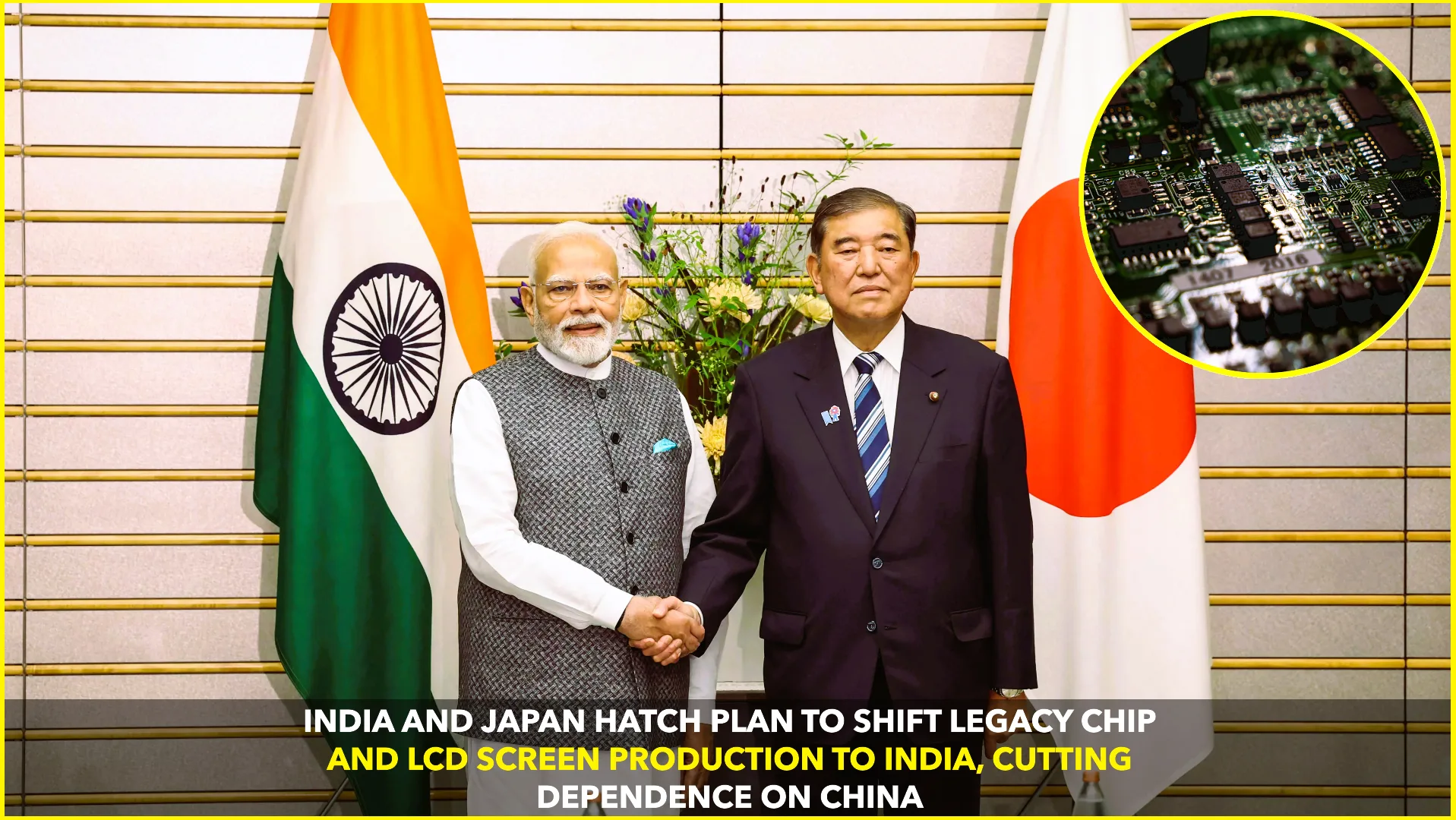Japan and India are now advancing a cooperative plan to shift production of older-generation semiconductor chips and LCD screens to India. This initiative is aimed at reducing both nations’ reliance on Chinese manufacturing, while reinforcing economic security collaborations SwarajyaDIGITIMES Asia.
The technologies involved are often called “legacy” — they rely on well-established manufacturing tools and processes, rather than the latest high-density nodes. Even though they’re not cutting-edge, these chips and displays remain critical for many everyday uses, from voltage control in electric vehicles to inverters that improve energy efficiency in appliances like air conditioners and refrigerators.
A joint strategy designed by the Japan External Trade Organization (JETRO) and the Confederation of Indian Industry is expected to be announced soon. This aligns with Prime Minister Narendra Modi’s visit to Japan for the India-Japan Annual Summit starting August 29, 2025, where a formal economic security agreement is anticipated SwarajyaIndiatimes.
Under the plan, production that Japan is scaling down—due to rising competition from low-cost Chinese goods—will be shifted to India. At the same time, Indian manufacturing capacity in these mature tech segments will be reorganized and expanded.
Beyond semiconductors and LCD screens, the transfer encompasses solar power equipment, storage batteries, and compressors. As part of this cooperation, India is also expected to adopt stronger intellectual property protection standards based on Japanese models, aimed at preventing technology leakage in strategic manufacturing sectors.
For Japanese companies facing downward margins in these legacy sectors, relocating production to India offers lower labor costs and simpler logistics. It also helps Japan maintain competitiveness and keep manufacturing know-how viable Swarajya.
From India’s perspective, integrating Japanese expertise with local capabilities supports its broader push toward semiconductor self-reliance. The collaboration is seen as a way to scale mass production, create jobs, and gradually position India as a manufacturing hub analogous to China—but with stronger strategic autonomy SwarajyaWikipedia.
This move also dovetails with India’s existing national policies like “Make in India” and its growing number of electronics manufacturing corridors. In recent years, the government has approved multiple semiconductor and electronic hardware projects—particularly in states like Uttar Pradesh—with the aim of reducing import dependence and boosting domestic output Wikipedia.
The timing of the initiative is significant. While the U.S. has imposed high reciprocal tariffs on Indian exports tied to crude oil purchases, India is simultaneously striving to diversify away from reliance on China—from both geopolitical and supply-chain standpoints. Japan’s plan offers India a strategic technology and investment partner alternative to China’s dominance.
Specific Japanese firms are already making moves in alignment with the strategy. One storage-battery maker is reportedly close to signing an MoU with an Indian partner. Another electrical machinery company has started building a compressor plant in Tamil Nadu.
Looking ahead, once the joint framework is formalized during the summit, companies from both countries are expected to form new partnerships in assembly and possibly backend chip processing. As this legacy ecosystem takes root, it could serve as a foundation for future collaboration on more advanced semiconductor projects SwarajyaWikipedia.
Analysts underscore that this transfer is not about high-end chips used in smartphones or data centers. Rather, these mature technologies remain vital across consumer electronics, automotive, industrial appliances, and clean energy sectors. That makes them economically significant, even if they’re not headline-grabbing advances.
Overall, the initiative illustrates a growing strategic alignment between Tokyo and New Delhi. Both governments are pursuing supply-chain diversification, technological cooperation, and economic resilience across Asian marketplaces. For India, the production shift marks a practical step toward greater industrial capacity. For Japan, it’s a way to preserve its legacy manufacturing footprint and mitigate competitive pressures.
In the months ahead, attention will focus on the agreements signed during the summit and the rollout of specific industrial partnerships. If executed well, this move may mark a turning point—slowly establishing India as a capable hub for legacy electronic components while advancing bilateral economic security.










